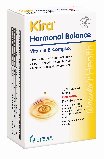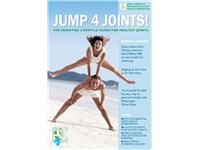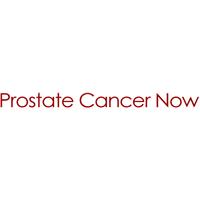

General advice
Vitamins are either water or fat soluable. Vitamins A, D, E and K are fat soluable and stored in the liver by the body. Since they are used slowly overdosing on them can be more toxic. The B vitamins and vitamin C are water soluable and excess amounts are flushed out of the body.
Since many processed foods are deficient in essential vitamins they can be taken by way of supplements. New research has shown that Vitamin B3 in the diet can help prevent Alzheimer’s, and Vitamins D and C are being investigated for their potential role in the prevention of cancer.
Antioxidants are the elixir vitamins and supplements that help the body defend itself against free radical attack – these are unstable molecular structures that damage cells and which scientists believe are responsible for mutations that cause cancer and other diseases and illnesses. Although we identify several vitamins, minerals and supplements that have particular antioxident properties, they deliver the optimum benefits when taken with other essential nutrients and a balanced diet.
The most important antioxidents are alpha lipoic acid, acetyl L-carnitine, DMAE, vitamin A and betacarotene, vitamin C, Vitamin E, selenium, followed by vitamin B2 (riboflavin), and the minerals, copper, manganese and zinc. Other important antioxidents are co-enzyme Q10, carotenoids such as lutein and lycopene, alpha lipoic acid, green tea and grapeseed extracts.
Care should be taken not to exceed guidelines and a qualified medical doctor should be consulted for accurate information that takes into account your age, weight, health and any medical conditions for which you are taking drugs that might cause contra-indications.
VITAMIN A (and beta-carotene)
Found in Liver, cheese, eggs, oily fish, also cod, halibut, milk., brocolli, cantaloupe melon, kale, red bell peppers, watercress and spinach. Essential for growth, bones, vision, skin, growth, immune system and reproduction. It also helps protect against a range of cancers, helps acen, colds and infections Deficiencies cause mouth ulcers, poor night vision, acne, frequent colds, flaky skin and dandruff. A lack of this vitamin is common in those with Crohn’s Disease. High doses can increase the risk of bone fracture and damage unborn babies – but you’d need to take more than 5g a day.
Since it is fat-soluable it is best taken with some dietary fat and the mineral zinc. As far as the skin is concerned it penetrates into cells protecting them from free radicals and oxidative stress. Acne and ageing skin are often treated with topical Retin-A (tretinoin), an acid form of vitamin A.
The B VITAMINS
These vitamins work together to aid a large number of biological processes that affect the skin, brain and nerves. Thy aid the health of hair, skin and nails, strengthen bones and muscles, fight fatigue, aid liver health, brain function and skin disorders. A deficiency can cause a range of problems ranging from skin problems to insomnia and depression.
VITAMIN B1 (thiamin)
It is found in pork, vegetables, milk, cheese, peas and beans, dried fruit and nuts, salmon and soyabeans. . Contains Vitamin B1, or thiamine, is essential for energy production, brain function and digestion. A lack of leads to tender and weak muscles, irritability, poor concentration, poor memory, depression and tingling hands.
VITAMIN B2 (riboflavin)
Found in cereals, meat, kidneys, mushrooms, eggs, milk, watercress, cauliflower, almonds, walnuts, low-fat cottage cheese and plain yogurt. This vitamin helps turn fat, sugar and protein into energy. It is essentialfor healthy skin, hair and nails and to regulate body acidity. Deficiencies can cause sore tongue, sensitivity to bright lights, cataracts, dull hair and skin problems. In levels found in supplements, there’s no evidence this can cause harm. Vitamin B2 is useful in treating migraine and helps reduce dependence on painkillers used to treat them.
VITAMIN B3 (niacin)
Found in oily fish, liver, poultry, eggs, nuts and seeds, mushrooms, wholegrains, vegetables. It is essential for energy production, brain function, hormones and healthy skin. Helps balance blood sugar. A lack can result in appetite loss, dementia, diarrhea, lack of energy, headaches, anxiety, skin problems. High doses can cause skin flushing so high amounts should not be taken without medical supervision.
The Institute For Healthy Ageing in Chicago recently discovered that people who eat a diet low in Vitamin B3 (12mg or less per day) are 80 per cent more likely to suffer from Alzheimer’s. Wheras those to take the vitamin were mentally fitter in general. Other studies have found that vitamin B3 is beneficial in preventing cataracts. In cases of mild depression, the vitamin is given with the amino acid tryptophan which together help to stimulate serotonin, the body’s feel good chemical.
VITAMIN B5 (pantothenic acid)
Found in almost all meat and veg. Red meat, mushrooms, rye bread, kidney, eggs, broccoli, almonds, chickpeas and lentils. Assists in the body’s energy production and endurance, controls fat metabolism and is essential for the brain and nerves. Lack causes muscle tremors or cramps, apathy, anxiety or tension and tiredness.
VITAMIN B6 (pyridoxine)
Found in liver, pork, chicken, salmon, whole cereals, oats, wheatgerm, eggs, avocado, bananas, lentils and vegetables. It is necessary for protein utilisation and brain function. A natural antidepressant. A lack of can cause depression, irritability, muscle tremors, lack of energy and skin problems. Taking high levels such as 1,000mg/day have been associated with nerve damage. Carpal tunnel syndrome which causes pain and numbness in the fingers and associated with arthritis is reduced with by increasing intake of vitamin B6.
VITAMIN B8 (Biotin)
Found in kidney, liver, eggs, dried fruit, almonds, wheatbran, and oats. Helps the body use essential fats, promoting healthy skin, hair and nerves. Assists in metabolising food and utilising other B vitamins. Promotes healthy hair. A deficiency can result in anorexia, nausea, vomiting, depression, hair loss, dry skin, eczema.
VITAMIN B9 (flate, folacin, folic acid)
Found in green vegetables, asparagas, beetroot, peas, chickpeas, sprouts, almonds, brown rice and avocados, chicken, kale, melon, oranges, parsnips and spinach.. Needed for cell division and growth. Critical in the womb for brain development and nerves. Insufficient can led to anaemia, eczema, anxiety, poor memory, stomach pains, sore tongues and mouths and diarrhea.
VITAMIN B12 (cyanocobalamin)
Found in all meat products, seafood, seaweed, eggs, halibut, salmon and yogurt. Helps blood carry oxygen, so is essential for energy. Needed to make DNA, for cell division and nerve function. A lack of causes poor hair condition, irritability, lack of energy, weakness, anemia, constipation, flatulence and weight loss. Helps to lower hormocysteine levels (used with folic acid and B6). There are no known risks
VITAMIN C (Absorbic Acid)
Found in broccoli, peppers, tomatoes, watercress, cauliflower, citrus fruit, kiwi fruit, berries. There are two types of vitamin C, both of which are important antioxidents. The usual form is known as L-ascorbic acid, which is water soluable and protects the water element of skin cells. The other vitamin c, known as C ester, which is fat soluable and protects the fatty part of the cell. This is made of absorbic acid with an added fatty acid from palm oil and is retained by the skin far better than L-ascorbic acid.
Vitamin C strengthens the immune system, makes collagen and keeps bones, skin and joints healthy and strong. Detoxifies pollutants and protects against cancer. A lack can lead to infections, bleeding gums, easy bruising, slow wound healing, wrinkles and the disease scurvy. It is also thought to be a contributor to Parkinson’s Disease. High doses can cause diarrhea.
Vitamin C is best taken with bioflavinoids, the antioxident compounds found in vegetables and fruits.
Vitamin C combined with Vitamin E helps slow the progress of the age-related eye disease, macular degeneration, the leading cause of blindness in the over-65s, caused by a deterioration in the retina. It is thought that Vitamin C helps in the absorption of lutein and lypocene, bioflavinoids found in fruit and vegetables that are needed to maintain the health of the retina.
Since Vitamin C is needed for the production of collagen — the basis of healthy cartilage, ligaments and tendons, it also stimulates the bone-building cells and boosts calcium absorption. Research has found that people who suffered back pain because of damaged discs found this reduced (and, in some cases, the need for surgery was overcome) after taking Vitamin C daily.
Low levels of Vitamin C are associated with rheumatoid arthritis, which leads to swelling and stiffness in the joints of the knees, wrists and ankles. Studies at Manchester and Cambridge Universities found that people who ate plenty of dietary sources of Vitamin C, such as fruit and vegetables, substantially reduced their risk of developing the disease.
Vitamin C can also help reduce the risk of heart disease and stroke, according to recent studies. It can also help overcome fertility problems associated with a low sperm count. Studies have found that 500mg of Vitamin C twice a day can boost sperm count by a third while also reducing the numbers of abnormal sperm — which can’t fertilise an egg — by the same amount.
VITAMIN D (Calciferol)
Found in oily fish, liver, eggs and fortified cereals. Formed in the skin on exposure to the sun. Regulates calcium levels, helps maintain heart action and the nervous system. A lack of can cause joint pain or stiffness, backache, tooth decay and muscle cramps. High doses over long periods can weaken bones. Doses of 1,250mcg are potentially toxic.
Vitamin D may reduce the risk of developing Type 1 diabetes, the most serious form of the disorder, which can be controlled only with insulin injections. Finnish studies found that babies given Vitamin D supplements have an 80 per cent reduced risk of developing the condition in later life, although as yet scientists are not sure why.
Vitamin D helps those with the bone-thinning disease osteoporosis, as it plays a key part in the absorption of calcium, which is vital for bone strength. Studies have found that a Vitamin D supplement, taken with calcium, can help reduce the rate of fractures (a common side effect of the condition) by 45 per cent. Most people get enough Vitamin D through diet and exposure to the sun, but elderly people may benefit from a supplement.
American studies have found that low levels of Vitamin D increase the amount of wear and tear in the joints of the hip and knee, which can lead to osteoarthritis — a bone condition that affects half of those over the age of 60. The Arthritis Research Campaign is funding further research to see if Vitamin D could be used to combat osteoarthritis of the knee in future.
VITAMIN E (Tochopherol)
Found in unrefined plant oils, tuna, soya, olive oil, nuts and seeds, spinach. Necessary to protect fats in cell membranes from damage. May protect against cancer. Helps the body use oxygen. Improves wound healing and fertility. A lack of leads to easy bruising, slow wound healing, loss of muscle tone and infertility. No toxic effects of found at less than 2,000mg per day.
Studies have found that people with sufficient Vitamin E in their diet have a reduced risk of heart attacks. It can also reduce the risk of further attacks in people who have already suffered one. Vitamin E reduces cholesterol and inflammation, and so helps prevent blood vessels becoming furred or inflamed. However, the studies found that the benefits are gained only from dietary sources of Vitamin E, not supplements.
Vitamin E may also help a number of menopausal symptoms including hot flushes, and mood swings caused by hormonal imbalances.
Researchers at St Thomas’s Hospital in London found that pregnant women could reduce the risk of pre-Eclampsia — which causes a huge surge in blood pressure and kidney damage, and can prove fatal to mother and baby — by taking Vitamins E and C. The study found that taking 400mg of Vitamin E and 1,000mg of Vitamin C reduced the risk by almost ten per cent. It is thought the two vitamins help ‘mop up’ the toxins released into the body through the kidney damage.
VITAMIN K (Phylloquinone)
Found in green, leafy vegetables, broccoli, vegetable oils, potatoes, milk. Vitamin K is essential for the normal coagulation of blood. A lack of causes easy bleeding. Supplements aren’t needed. Our diet provides around half of our needs, and bacteria in the intestine produce the rest.
MINERALS
CALCIUM
Found in milk, cheese, green leafy vegetables, soya milk, nuts and eggs. Promotes healthy heart and nerves, clots blood, improves skin, bone and teeth, contracts muscles. Insufficient can lead to muscle cramps, insomnia, joint pain or arthritis, osteoporosis, bleeding gums, high blood pressure and even rickets.. Too much can cause diarrhoea. Found in broccoli, low fat yogurt, nuts and seeds, sardines and salmon, sea vegetables, tofu.
CHROMIUM
Found in Brewer’s yeast, calves liver, wholemeal bread, rye bread, oysters, potatoes, chicken and apples. Needed for heart function . Assists in regulating blood sugar levels, regulates insulin, lowers cholesterol and is also attributed with assisting weight loss. A deficiency may cause glucose tolerance and impaired growth, dizziness and cravings for frequent meals and sweets. It should be taken with vitamin C for maximum absorbtion levels andto reduce cravings. Although the FSA recommends no more than 10mg, many pre-diabetic people take this amount to improve blood- sugar control. The FSA have issued a caution on a form of chromium called chromium picolinate, which may increase cancer risk.
MAGNESIUM
Found in leafy vegetables, nuts, yeast, red pepper, wholemeal bread, avocado, oatmeal, tofu. Necessary to strengthen bones and teeth, promotes healthy muscles by helping them relax; important for the nervous system and energy production. A lack can cause muscle tremors, insomnia, high blood pressure, depression, kidney stones.
IRON
Found in black pudding, liver, red meat, beans, nuts, dried fruit, wholegrains, green, leafy vegetables. Necessary for blood to carry oxygen to tissues. It’s also needed in enzymes vital for energy production. Deficiency can led to anaemia, pale skin, fatigue, nausea and sensitivity to cold. Too much can cause diarrhoea – though anaemics may take more than 17mg under medical supervision.
SELENIUM
Found in tuna, oysters, wholegrains, mushrooms, cottage cheese, courgettes, chicken. Antioxidant which helps fight infection, promotes a healthy heart, reduces inflammation, helps fight cancer. A deficiency of this mineral causes premature aging, high blood pressure, frequent infections. No signs of toxicity have been found below 0.7mg.
SODIUM CHLORIDE
Found in celery and processed foods. Sodium chloride, or salt, maintains body’s water balance, prevents dehydration. Needed for nerve and muscle function. Moves nutrients into cells. Insufficient can cause dizziness, rapid pulse, apathy, muscle cramps, headache. Excess salt may contribute to high blood pressure and heart disease.
ZINC
Found in brazil nuts, chicken, halibut, oatmeal, salmon, sunflower seeds and turkey. Zinc is responsible for helping wounds to heal, collagen prod uction, cell division. A deficiency causes a worsening of skin conditions such as psoriasis.











